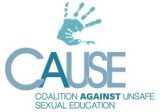Copyright 2016. All rights reserved. Print copies available at TheNewAtlantis.com/BackIssues.
Part One: Sexual Orientation the exact constellation of experiences that definitively ‘qualify’ an individual as lesbian, gay, or bisexual.”30
It is owing to such complexities that some researchers, for instance Laumann, proceed by characterizing sexual orientation as a “multidimensional phenomenon.” But one might just as well wonder whether, in
trying to shoehorn this “multidimensional phenomenon” into a single category, we are not reifying a concept that corresponds to something far too plastic and diffuse in reality to be of much value in scientific research. While labels such as “heterosexual” and “homosexual” are often taken to designate stable psychological or even biological traits, perhaps they do not. It may be that individuals’ affective, sexual, and behavioral experiences do not conform well to such categorical labels because these labels do not, in fact, refer to natural (psychological or biological) kinds. At the very least, we should recognize that we do not yet possess a clear and well-established framework for research on these topics. Rather than attempting to research sexual desire, attraction, identity, and behavior under the general rubric of “sexual orientation,” we might do better to examine empirically each domain separately and in its own specificity.
To that end, this part of our report considers research on sexual desire and sexual attraction, focusing on the empirical findings related to etiology and development, and highlighting the underlying complexities. We will continue to employ ambiguous terms like “sexual orientation” where they are used by the authors we discuss, but we will try to be attentive to the context of their use and the ambiguities attaching to them.
Challenging the “Born that Way” Hypothesis
Keeping in mind these reflections on the problems of definitions, we turn to the question of how sexual desires originate and develop. Consider the different patterns of attraction between individuals who report experiencing predominant sexual or romantic attraction toward members of the same sex and those who report experiencing predominant sexual or romantic attraction toward members of the opposite sex. What are the causes of these two patterns of attraction? Are such attractions or preferences innate traits, perhaps determined by our genes or prenatal hormones; are they acquired by experiential, environmental, or volitional factors; or do they develop out of some combination of both kinds of causes?
What role, if any, does human agency play in the genesis of patterns of attraction? What role, if any, do cultural or social influences play?
Fall 2016 ~ 25
